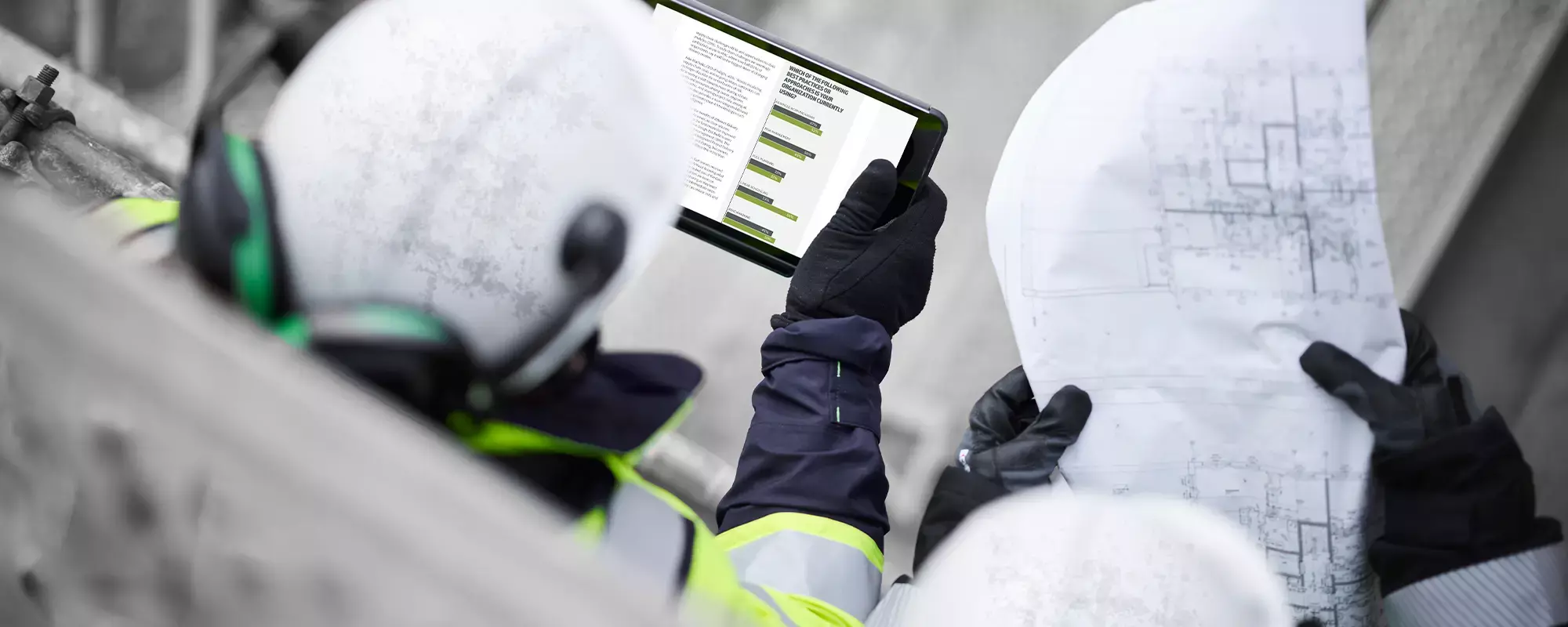Smarter processes combined with smarter models enables smarter decisions. And that leads to better, more efficient project outcomes. As intelligence-based processes, advanced work packaging (AWP) and building information modeling (BIM) are each considered an industry best practice in terms of how they improve project planning and execution. But when used together, they can deliver even more powerful results for today’s increasingly complex capital projects. How does this happen?
To better understand, let’s lay out a bit of groundwork about each one.
What are AWP and BIM?
AWP is a productivity-enhancing approach to project planning that is driven by construction, rather than by engineering and procurement. However, all three collaborate equally to support the plan. AWP breaks down a project hierarchically into progressively smaller parts along a Path of Construction (PoC) — from construction work areas (CWA) to construction work packages (CWP) and then to installation work packages (IWP) — and identifies the exact resources needed for each IWP. This approach seeks to remove the constraints that have historically bottlenecked jobsite progress — such as not enough materials, the wrong tools, and missing, incomplete or outdated task information.
BIM is a process that allows you to virtually build a project with all its individual elements right down to the last nail, with each one linked to all of its associated actionable data, including size, quantity and price. This yields a vast amount of rich data housed in a common data environment (CDE) accessible by project team members. A BIM-based model can be modified to experiment with different materials and designs as well as experienced with virtual flyovers and walk-throughs. This modification capability can also be used throughout the build to determine impact of potential changes on project cost and feasibility.
Though they may seem an unlikely pair, these methodologies are quite the compatible project partners. Each represents a type of intelligent model that improves not only how information flows and is organized but how it’s used by individual teams to support a project’s construction. This streamlined approach makes them uniquely suited to work with large-scale, highly involved capital projects.
In the beginning, AWP and BIM may be a bit more challenging to grasp than the respective traditional methods they replace. That’s to be expected when learning and adopting new processes. But more than that, each requires a bit of a paradigm shift in how projects are designed and completed and how decisions are made. However, when you get past their initial complexity, you’ll uncover the logic and simplicity necessary to more effectively manage the growing sophistication of the capital projects for which they’re used.
What happens when AWP and BIM work in tandem?
While they each collect the same kind of data at the outset, it’s used for different purposes.
Within the AWP process, as the engineering team begins creating the design, the construction team is pulling up a chair at the same table to collaborate in the design process. Together they may experiment with several design and material alternatives before making final decisions on which are the best-suited for the project.
Construction then plots out its CWPs along a PoC in order to remove constraints that can impede job progress. During this design phase, construction specifies everything it will need to complete the work, including job task information, materials, tools, equipment and schedules. This gives the procurement team, who also has a seat at the table, a precise inventory of required resources to secure in time to meet all the work packages’ completion schedules. All of this supports a more realistic design and project timeline.
Meanwhile, using this highly detailed, real-life information in the BIM process, a smarter model can be created. All the relevant details from the BIM model that each specific discipline needs to complete their work is incorporated into the respective smaller IWPs as they’re developed without having to re-enter all the details. This ensures individual craftspeople and site crews will have the information they need once they arrive at the jobsite for that task.
Benefits of AWP and BIM working alongside each other
By embracing AWP and BIM, the data these intelligent, precision-based processes harness and share throughout the project life cycle can be accessed and leveraged by everyone in real time to make smarter decisions — from the aforementioned design and material choices, to forecasting for contingency planning, to cost control, to necessary schedule adjustments. Those aren’t solo construction decisions; everyone within construction, engineering and procurement are needed to make these collaborative processes work.
That collaboration established at the project’s outset paves the way for a design secured with early collective buy-in, which has a trickle-down effect. When combined with the preemptive elimination of constraints established at AWP’s IWP level, there are fewer design-based changes and far less likelihood of unfinished, deficient or flawed work turning up during quality assurance or final inspections.
That turns the building commissioning process into a much smoother one, with far fewer issues winding up on the punch list for rework. And that’s true whether the commissioning begins at the start of the project along with AWP and BIM, which would be ideal, or at the end just before handover. When it comes time for that handover, all the data that’s been gathered throughout the project with AWP and BIM’s highly organized processes can be transferred seamlessly.
When you look at the benefits of these processes holistically, it adds up to more project certainty and predictability, an oft-pursued yet elusive goal when working on capital projects.
Getting the most from AWP and BIM
While AWP and BIM are processes, not technologies, the best outcomes will be achieved using at least point solutions or preferably integrated systems rather than paper-based processes and computer spreadsheet programs known for their volumes of data, time-consuming data entry and errors. When setting up the technology part of it at the point-solution level, though, the data should be structured the same way so it’s recognizable across solutions, able to be shared among them without the need to alter or convert anything. Because the information lives on long after the building is in use, it’s important to organize everything so it can be understood, referenced and used in the future.
Having the right processes in place can make all the difference. Explore how our AWP solution, InEight Plan, and our BIM solution, InEight Model, can help you make smarter decisions and improve project outcomes. Schedule a time to see how they can work for your capital projects.




